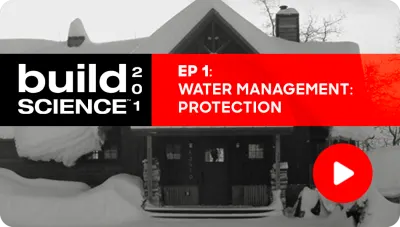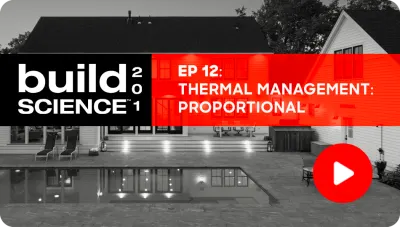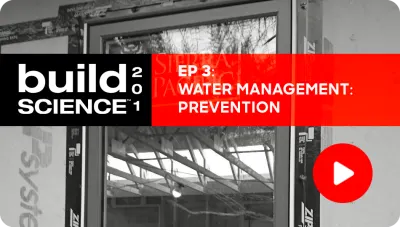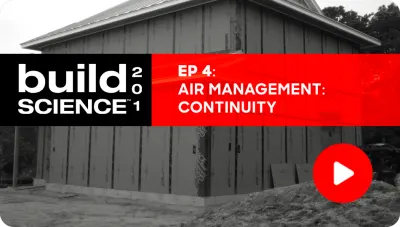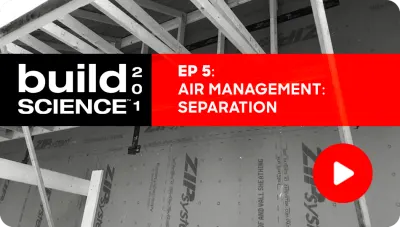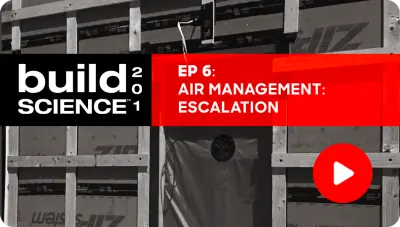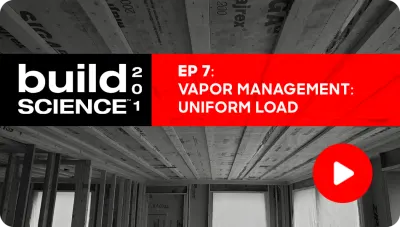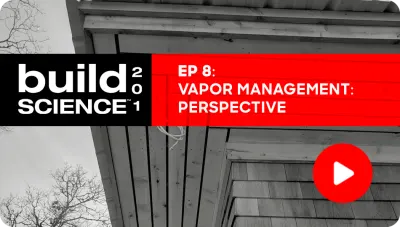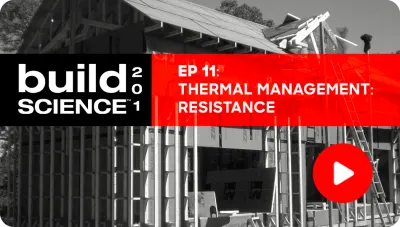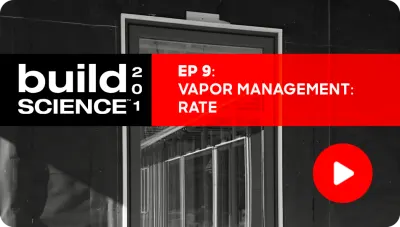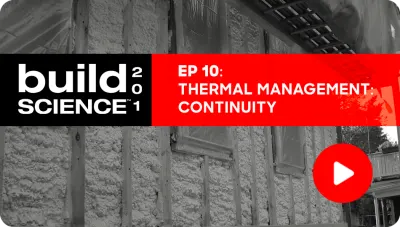Build Science™ 201
Ep. 2 - Water Management: Mitigation
Matt and Steve continue their conversation on water management, this time focusing on mitigation and highlighting both rainwater and groundwater control. They begin by discussing a real-world case where the absence of "kickout flashing" led to severe wood rot in a 20-year-old home. This emphasizes the critical role of allowing water to escape rather than merely trying to keep it out. Rain screens, which create a gap between the siding and the structure, are essential for drainage and ventilation, particularly in regions with over 20 inches of annual rainfall.
The discussion moves to proper installation techniques for footing drains, sump pumps, and waterproofing systems, noting that drainage mats and filtered fabrics are key for managing water below ground. Improper installations can result in costly repairs. Both Matt and Steve stress that good water management requires forethought—it's not just about sealing, but ensuring a clear pathway for water to exit. They conclude by emphasizing that neglecting these measures can lead to extensive damage and financial loss.
Builders, architects, and homeowners alike, should consider, "Where does the water go?" in every design. Proper mitigation strategies can prevent major issues, saving time and money in the long run.
Continue to the next episode in the Water Management section: Prevention.
Episodes
Ep. 6 - Air Management: Escalation
Episode 6
Matt and Steve emphasize effective air sealing to prevent moisture issues, highlighting techniques like fluid-applied sealants, meticulous penetrations, and blower door tests. They advocate for continuous improvement and training for airtight, efficient homes.
Ep. 11 - Thermal Management: Resistance
Episode 11
Matt and Steve highlight insulation's role in heat resistance, discussing R-values, U-factors, thermal bridging, and continuous insulation. They also emphasize climate-specific techniques, shading devices, and window specifications for energy efficiency.
Ep. 12 - Thermal Management: Proportional
Episode 12
Build Science™ 201 emphasizes proportional thermal control, highlighting balanced insulation for sub-slabs, walls, and windows. Builders should prioritize water/air control layers, exceed minimum attic insulation, and enhance energy efficiency. Build Science™ 201 emphasizes proportional thermal control, highlighting balanced insulation for sub-slabs, walls, and windows. Builders should prioritize water/air control layers, exceed minimum attic insulation, and enhance energy efficiency.

 Share on facebook
Share on facebook Tweet
Tweet Email
Email Share on Linkedin
Share on Linkedin
